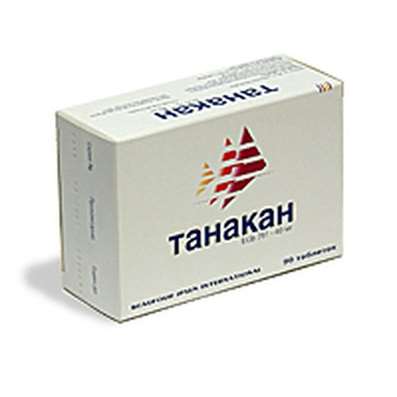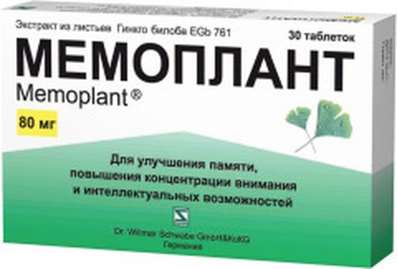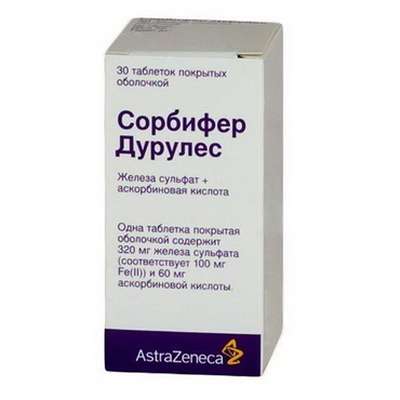Instruction for use: Merlit
I want this, give me price
Dosage form: tablets
Active substance: Lorazepam*
ATX
N05BA06 Lorazepam
Pharmacological group:
Anxiolytics
The nosological classification (ICD-10)
F06.1 Organic catatonic state: Catatonic syndrome; Catatonic state; Catatonic manifestations
F10.4 Abstinent state with delirium: Alcoholic delirium; White fever alcoholic; Delirium; Delirious condition with alcoholism and drug addiction
F10.5 Alcoholic alcohol: Alcoholic hallucinations; Psycho-organic syndrome in chronic alcoholism; Alcoholic psychosis; White fever alcoholic; Delirium; Delirium with alcoholism; Acute alcoholic psychosis; Delirious condition with alcoholism and drug addiction; Acute alcoholic psychosis with autonomic disorders
F20.2 Catatonic schizophrenia: Catatonic state
F32 Depressive episode: Adynamic subdepression; Astheno-adynamic subdepressive states; Asthenodepressive disorder; Astheno-depressive disorder; Asthenodepressive state; Astheno-depressive state; Major Depressive Disorder; Vyaloapatichesky depression with retardation; Double depression; Depressive pseudodement; Depressive illness; Depressive mood disorder; Depressive disorder; Depressive mood disorder; Depressive state; Depressive disorders; Depressive syndrome; Depressive syndrome larviated; Depressive syndrome with psychoses; Depressed masks; Depression; Depression Depletion; Depression with the phenomena of inhibition within the framework of cyclothymia; Depression is smiling; Involutional depression; Involutionary melancholy; Involutional depression; Manic-depressive disorder; Masked Depression; Melancholic Attack; Neurotic depression; Neurotic depression; Shallow Depression; Organic depression; Organic depressive syndrome; Simple depression; Simple melancholic syndrome; Psychogenic depression; Reactive depression; Reactive depression with moderate psychopathological symptoms; Reactive depressive states; Reactive depression; Recurrent depression; Seasonal depressive syndrome; Severostatic depression; Senile Depression; Senile Depression; Symptomatic Depression; Somatogenic depression; Cyclotymic depression; Exogenous Depression; Endogenous depression; Endogenous Depressive Conditions; Endogenous Depression; Endogenous depressive syndrome
F40 Phobic anxiety disorders: A state of fear; Fear; Phobia; Phobic disorders; Phobias; Anxiety neurosis; Anxiety of anxiety; Obsessive fears; Acute anxiety disorder; Paroxysmal fear syndrome; Feeling of fear; Night Fears
F41 Other anxiety disorders: Anxiety status; Anxiety; Chronic alarm; Sense of anxiety; Anxious-hypothetical states; Stopping an alarm; Nonpsychotic anxiety disorders
F48 Other neurotic disorders: Neurosis; Neurological diseases; Neurotic disorders; Neurotic condition; Psychoneurosis; Anxious-Neurotic Conditions; Chronic neurotic disorders; Emotional reactive disorders
G40.6 Seizures of grand mal, unspecified [with or without small seizures [petit mal]]: Large seizures (grand mal); Large seizures of epilepsy; Large seizures during sleep; Secondary generalized seizures; Secondary-generalized tonic-clonic seizures; Secondary generalized seizures; Generalized seizures; Generalized tonic-clonic seizures; Generalized seizure; Generalized epileptic seizure; Primary-generalized tonic-clonic seizure; Tonic-clonic seizures; Tonic-clonic convulsions; Tonic-clonic convulsive seizures
G47.0 Disorders of falling asleep and maintaining sleep [insomnia]: Insomnia; Insomnia, especially difficulty falling asleep; desynchronosis; Prolonged sleep disturbance; Difficulty falling asleep; Short-term and transient insomnia; Short-term and chronic sleep disorders; Short or shallow sleep; Violation of sleep; Disturbed sleep, especially in the phase of falling asleep; Infringements sleep; sleep disturbances; Neurotic sleep disturbance; Shallow superficial sleep; shallow sleep; Poor quality of sleep; Night awakening; sleep Pathology; Postsomnic violation; transient insomnia; Trouble falling asleep; Early awakening; Early morning awakening; Early awakening; sleep disorder; somnipathy; persistent insomnia; difficult to fall asleep; difficulty falling asleep; Difficulty falling asleep in children; persistent insomnia; Worsening sleep; Chronic insomnia; Frequent night and / or early morning awakening; Frequent nocturnal awakening and a sense of the depth of the non-sleep; Night waking
R25.2 Cramp and spasm: Muscle spasms in tetanus; Pain syndrome with smooth muscle spasms; Pain syndrome with smooth muscle spasms (renal and biliary colic, intestinal spasm, dysmenorrhea); Pain syndrome with spasms of smooth muscles of internal organs; Pain syndrome with spasms of smooth muscles of internal organs (renal and biliary colic, intestinal spasm, dysmenorrhea); Painful muscular spasm; Mimic spasms; Muscular spasticity; Muscle spasms; Muscular spasms of central origin; Muscular spasticity; Muscle spasm; Neurological contractures with spasms; Night cramps in the extremities; Nocturnal cramps in the legs; Night cramps calf muscles; Symptomatic convulsive state; Vesta Syndrome; Spasm of smooth muscles; Spasm of smooth vascular musculature; Spasm of muscles; Spasm of striated muscle due to organic diseases of the central nervous system; Skeletal muscle spasms; Spasms of smooth muscles of internal organs; Skeletal Muscle Cramps; Spastic states of striated musculature; Spasmodic pain syndrome; The spastic condition of smooth muscles; Spasticity of skeletal musculature; Muscle cramp; Convulsions; Cramps of the calf muscles; Convulsions of central origin; Convulsive condition; Convulsive Syndrome; Convulsive status in children; Tonic convulsions; Cerebral spasmodic syndrome; clasp knife phenomenon
R45.7 Condition of emotional shock and stress, unspecified: Exposure to stress factors; Exposure to extreme situations; Neuropsychic stresses; Professional stress; Psychoemotional overload and stress; Psychoemotional stress; Stressful condition; Stress; Stress loading; Stressful condition; Stressful situations; Stress of everyday life; Chronic stress; Long-term emotional stress; Psychological stress in air flights; Psychoemotional stress in stressful situations
R51 Headache: pain in the head; cephalgia; Pain in sinusitis; Pain in the neck; Pain headache; Headache vasomotor origin; Headache vasomotor origin; Headache with vasomotor disturbances; Headache; Neurological Headache; Continuous headache
Z100 * CLASS XXII Surgical practice: Abdominal surgery; adenomectomy; Amputation; Coronary angioplasty; Angioplasty of the carotid arteries; Antiseptic skin treatment for wounds; Antiseptic Hand; Appendectomy; atherectomy; Balloon coronary angioplasty; Vaginal hysterectomy; The coronary bypass; Interventions in the vagina and cervix; Interventions on the bladder; Intervention in the mouth; Restoration and reconstructive surgery; Hand hygiene of medical personnel; Gynecologic surgery; Gynecological intervention; Gynecological surgery; Hypovolemic shock during operations; Disinfection of purulent wounds; Disinfection of wounds edges; Diagnostic intervention; Diagnostic procedures; Cervical Diathermocoagulation; Long-surgery; Replacing the fistula catheters; Infection in orthopedic surgery; Artificial heart valve; cystectomy; Short-term outpatient surgery; Short-term operation; Short surgical procedures; Krikotireotomiya; Blood loss during surgery; Bleeding during surgery and in the postoperative period; Kuldotsentez; laser photocoagulation; laser coagulation; retinal laser coagulation; Laparoscopy; Laparoscopy in Gynecology; CSF fistula; Small gynecological operations; Small surgical procedures; Mastectomy and subsequent plastic; mediastinotomy; Microsurgical operations on the ear; Mukogingivalnye operation; suturing; Minor surgery; neurosurgical operation; Immobilization of the eyeball in ophthalmic surgery; testectomy; pancreatectomy; Perikardektomiya; The period of rehabilitation after surgery; The period of convalescence after surgery; Percutaneous transluminal coronary angioplasty; Pleural thoracentesis; Pneumonia postoperative and posttraumatic; Preparation for surgical procedures; Preparation for surgery; Preparation of the surgeon's hands before surgery; Preparation of the colon for surgical procedures; Postoperative aspiration pneumonia in neurosurgical and thoracic surgery; Postoperative nausea; Postoperative bleeding; postoperative granuloma; postoperative shock; The early postoperative period; myocardial revascularization; Radiectomy; gastric Resection; bowel resection; uterine Resection; liver Resection; enterectomy; Resection of part of the stomach; Reocclusion of the operated vessel; Bonding tissues during surgical procedures; Removal of sutures; Condition after eye surgery; Condition after surgery; Condition after surgery in the nasal cavity; Condition after gastrectomy; Status after resection of the small intestine; Condition after tonsillectomy; Condition after removal of the duodenum; Condition after phlebectomy; Vascular surgery; Splenectomy; Sterilization of surgical instruments; Sterilization of surgical instruments; sternotomy; Dental surgery; Dental intervention in periodontal tissues; strumectomy; Tonsillectomy; Thoracic surgery; Thoracic surgery; total gastrectomy; Transdermal intravascular coronary angioplasty; Transurethral resection; Turbinektomiya; Removal of a tooth; cataract surgery; Removal of cysts; tonsillectomy; Removal of fibroids; Removing the mobile primary teeth; Removing polyps; Removing broken tooth; Removal of the uterus body; Removal of sutures; Fistula likvoroprovodyaschih ways; Frontoetmoidogaymorotomiya; Surgical infection; Surgical treatment of chronic limb ulcers; Surgery; The surgery in the anal area; The surgery on the colon; Surgical practice; The surgical procedure; Surgical interventions; Surgery on the gastrointestinal tract; Surgical procedures on the urinary tract; Surgical procedures on the urinary system; Surgical intervention of the genitourinary system; Surgical procedures on the heart; Surgical manipulation; surgery; Surgery on the veins; Surgical intervention; Vascular surgery; Surgical treatment of thrombosis; Surgery; cholecystectomy; Partial gastric resection; hysterectomy; Percutaneous transluminal coronary angioplasty; Percutaneous transluminal angioplasty; Coronary artery bypass; tooth Extirpation; Extirpation of milk teeth; pulpectomy; pulsative cardiopulmonary bypass; tooth Extraction; teeth Extraction; cataract extraction; Electrocoagulation; endourological intervention; episiotomy; Etmoidotomiya; Complications after tooth extraction
Composition and release form
1 tablet contains lorazepam 1 mg; In the contour blister packing 10 pcs., In the box 2 packs.
1 tablet - 2 mg; In plastic containers of 20 pcs., In the box 1 container.
Pharmachologic effect
Mode of action - anxiolytic, muscle relaxant, hypnotic, sedative.
Stimulates GABAergic mediator processes. By acting on the reticular formation of the brain, it helps to reduce the perception of impulses coming from sensitive receptors to the limbic system, and reduces its emotional coloration. Stabilizes the autonomic nervous system.
Pharmacokinetics
Bioavailability when ingested - more than 90%, binding to plasma proteins - about 80%; T1 / 2 - about 14 hours Metabolized in the liver, excreted mainly by the kidneys in the form of metabolites.
Indication of the Merlit
Neurotic disorders accompanied by anxiety, stress, fear, anxiety, psychoactive states, depression, emotional reactive disorders, sleep disturbances (especially in the sleep phase). Endogenous psychoses (manic and catatonic states, anxiety and excitement in schizophrenia), alcohol delirium, premedication in anesthesia, epilepsy (in combination with the main anticonvulsant drugs), symptomatic convulsions, psychosomatic disorders, headache.
Contraindications
Hypersensitivity, myasthenia gravis, zakratougolnaya glaucoma, acute intoxication (alcohol, psychotropic drugs).
Application in pregnancy and breastfeeding
With caution, especially in the first trimester of pregnancy.
Side effects
Dry mouth, dysphagia, nausea, vomiting, diarrhea or constipation, impaired appetite, impaired liver function (rarely); ataxia, fatigue, muscle weakness, skin reactions, changes in blood composition.
Interaction
Strengthens the effect of alcohol.
Dosing and Administration
Inside, 1 mg 1-3 times a day. With a pronounced state of fear and excitement, you can increase the daily dose to 4-6 mg, subject to medical supervision. In case of sleep disorders: 1 mg for 30 min before bedtime, 2 mg for severe sleep disorders. For premedication, 2 mg 1 hour before surgery.
Precautionary measures
Do not use during work drivers of vehicles and people whose profession is associated with increased concentration of attention. It is recommended to start treatment at the end of the workweek. The drug should be discontinued gradually.
Literature
Salam S.A. et al. Lorazepam for psychogenic catatonia //Am.J.Psychiat. - v. 144. - N 1082-1083.
Storage conditions of the drug Merlit
In the dark place at a temperature of no higher than 25 ° C.
Keep out of the reach of children.
Shelf life of the drug Merlit
3 years.
Do not use after the expiry date printed on the package.

 Cart
Cart





